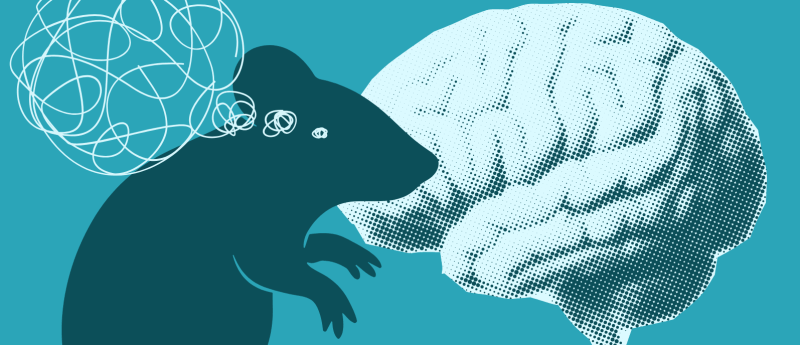Leptin neural circuit restores balance after anxiety upsets it

A brain circuit involving leptin allows mice to carry out vital behaviors, such as eating and sleeping, during anxious episodes.
A study led by researchers at the University of Cologne and University Hospital Cologne (both Cologne, Germany) has identified the neural circuit that counteracts anxiety, helping mice perform essential behaviors and reduce maladaptive behaviors. They found that neurons receptive to leptin – a hormone that governs energy balance in the body – track and predict anxiety, suppressing it to maintain balance. This research could inform the treatment of anxiety-related psychiatric disorders in the future.
Anxiety is an important mental state that helps protect us from dangerous situations; however, it can prevent us from eating, exploring new areas or resting appropriately. If left unchecked, it can also lead to dangerous maladaptive behaviors, such as anorexia nervosa.
Leptin-sensing neurons in the mouse brain
To explore the neural basis behind this, the team combined single-cell calcium imaging and cell-type-specific neuronal activity manipulations to visualize the activity of leptin-sensing neurons in mice as they explored different environments.
They reported that leptin-sensing lateral hypothalamic neurons predicted the anxiety response of the mice and that activating them, chemically or via implanted optic fiber implants, enabled the mice to behave normally, even in anxiety-inducing situations.
 When it comes to cooperation, biology and AI share similarities
When it comes to cooperation, biology and AI share similarities
Research identifies shared neural mechanisms behind cooperation in both biological brains and artificial intelligence systems.
“We imaged the activity of leptin-sensing neurons while mice faced situations that might cause anxiety. We saw that these neurons get activated whenever animals overcame anxiety and freely explored exposed areas or approached food within them,” explained Rebecca Figge-Schlensok, a doctoral researcher at the University of Cologne. “When we boosted this activity, mice explored more and were able to eat in challenging contexts – clear signs that this circuit helps push past anxiety to support adaptive, goal-directed behavior.”
“What excited us is that the activity of these leptin-sensing neurons doesn’t just track state – it predicts which individual will be more or less anxious in a challenging situation,” noted Anne Petzold, co-first author, currently a group leader at the European Neuroscience Institute (Göttingen, Germany). “Increased input from the prefrontal cortex provided a mechanistic handle for why more anxious individuals fail to recruit this anxiety-reducing circuit.”
What this circuit could mean for anorexia nervosa
To understand how this pathway intersected with maladaptive behavior, the team also investigated boosting the activity of leptin-sensing neurons in a murine model of anorexia nervosa. They reported that this boost stopped mice over-exercising, a behavior shared with human anorexia nervosa.
“Anxiety and anorexia nervosa often go hand in hand – and anorexia has the highest mortality rate of any psychiatric disorder, with no effective pharmacological treatment to date,” commented senior author Tatiana Korotkova, Professor at the University of Cologne. “By identifying a leptin-sensitive hypothalamic node that restrains anxiety-driven locomotion without suppressing normal activity, we begin to understand how emotional state and energy balance intersect in the brain. The next step is to test whether pharmacological modulation of these neurons could help treat anxiety and eating disorders.”